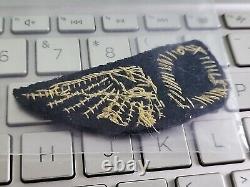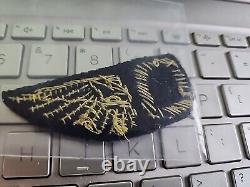Original Ww1 U. S. Army Air Service (usaas) Observer Half-wing- Real Thing Rare






PLEASE FOLLOW OUR E BAY STORE. From Wikipedia, the free encyclopedia. This article needs additional citations for verification. Please help improve this article.
By adding citations to reliable sources. Unsourced material may be challenged and removed. Learn how and when to remove this message. The Observer Badge is a military badge. Of the United States armed forces.
Dating from the First World War. The badge was issued to co-pilots, navigators, and flight support personnel as air observer. Who had received a variation in the training required for the standard Pilot's Badge. The Observer Badge survived through the Second World War. And into the 1950s, at which time the concept of an Observer Badge was phased out in favor of the modern Aircrew Badge. In addition to wings for Naval Aviators. Still maintains an "Observer Badge" which is issued to flight-qualified mission specialists, such as a select number of meteorologists and intelligence officers in both the U. Air Force awards its USAF Observer Badge, which is identical to the USAF Navigator Badge, to Air Force officers who have qualified as NASA. Have flown an actual mission aboard the shuttle and/or the International Space Station. And who are otherwise not previously aeronautically rated as an Air Force pilot or navigator. Armed Forces, the Observer Badge is rarely issued, but has seen a resurgence in the Air Forces of other countries, most notably the United Kingdom.First World War Observer Badge. The original Observer Badge was a half-wing variation of the Aviator Badge worn by military pilots of the United States Army Air Service.
And later the United States Army Air Corps. The badge was mainly awarded to gunners, spotters, and navigators on the first armed military aircraft. With the advent of bombing. The Observer Badge was also initially authorized for aircraft bombardiers. Those rated as Balloon Observers were also eligible for the badge, and the badge was typically referred to as both the Airplane Observer Badge and the Balloon Observer Badge.
The design of the badge awarded was identical in both cases, and towards the end of the First World War was commonly referred to as the "Airplane and Balloon Observer Badge", although the ratings for which the badge was issued remained distinct.

